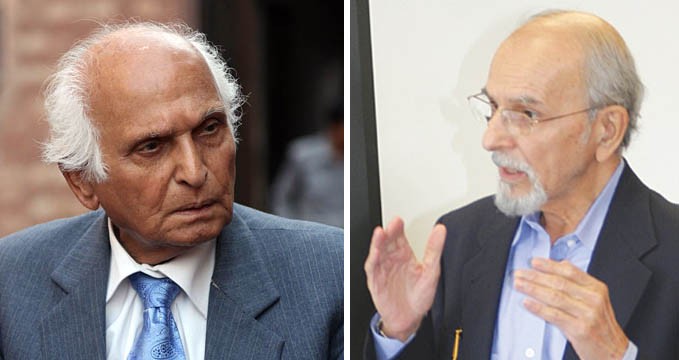
Take all the complexities in any given language and multiply them by two. That, in essence, is what the exercise of translation entails

Translating a literary text into another language is like crossing a high-hanging bridge. If you lean on one side, you will fall down; but if you bend on the other, the result won’t be any different. You need to achieve that perfect balance required by a stuntman walking a tightrope.
One major problem a translator faces is the deciphering of authorial intent. But authorial intent, if any, is a tricky issue. It does not always translate into the text. On the one hand, we do not know how much intent has been transformed into words. From the formation of the intent to the penning down of it on paper, there might be various points of loss. Authors may fall short of appropriate words, they might be in a hurry, or suffering from dementia, or just an occasional memory loss. They can be mindful about the limitations of possible readers who might be naïve or unaware of the intricacies of the language.
On the other hand, the authors can have a specific group of individuals in mind who know the connotations of the terms and the words used, and this filters out select phrases and idioms. All this is to say that the authors themselves cannot claim to be clear, precise and exact in translating their intent into a text.
Leaving aside what the author wants to communicate, readers engage with language on their own terms. It depends on their personal linguistic abilities, temperaments, mindsets, social, historical, and cultural positionality, and individual traits and purposes. Apart from the multitudes of literal meanings of a word or a phrase given in the dictionary, there are other shades of meanings which are hidden behind punctuation, stresses and hyperboles. Literary texts do not usually dwell on the plain, clear and fixed expressions. Rather, they include figurative speech, symbolism, allusions, imagery, and much more. There are homographs and homonyms, omissions and redundancies, similes and metaphors, idioms and proverbs.
How much of these inner layers of meanings can be grasped by the reader? The total sum cannot be homogeneous across individual people, groups, or classes and across time periods and geographies. In fact, the same reader, reading the same text, in the same location, can reach different conclusions with every new reading.
There is another trap: every word has manifold contexts and connotations. Usually, these go beyond the domain of language and enter the realm of culture. These cultural connotations are time bound. We need to know the norms, traditions and cultural allusions of words and phrases and what they meant at different times in history.
This timeness of the language, again, is multi-layered. There is a time when the text was created; there is a time when the reader engaged with it; there is also a sense of time that is enshrined within any given text, a time against the backdrop of which the characters and the narrative of the text operate. Language is no child’s play. But still we all play with it -- everyday.
Take all these complexities in the study of any given language and multiply them by two. That, in essence, is what the exercise of translation entails. More, in fact. A translator dives into the deep blue sea of texts in a language, finds pearls, selects the ones that look precious, and returns to the surface to persuade others that those are, indeed, real pearls.
Leaving aside the fact that translation is mainly a process of re-creation, it is traditionally considered about absorbing and passing on. But all that is absorbed cannot be passed on. Things are left out. They are added in. And this is an incredibly enriching process.
Translation enriches us in a very real sense. What kind of an intellectual wasteland would the world be without it? Who among us can forget the indomitable Qurratulain Hyder, or the intellectual powerhouse Muhammad Hasan Askari? The multi-lingual Zoe Ansari hardly needs introduction. Muhammad Salim-ur-Rahman is a literary blessing for the Urdu world. Muhammad Umar Memon, whose passing away we mourned very recently, turned translations to and from Urdu into a highly-respected literary enterprise of its own. Intizar Husain, Shahid Hamid, Khalid Hasan, Asif Farrukhi, Anwer Sen Roy -- are all of them not our muhsineen, ones who have bestowed favours upon us and made our literary existences infinitely better?
But who will replace Umar Memon? Who will keep Hyder’s craft alive? Could someone young and upcoming fill Intizar Husain’s shoes? Despair reigns when faced with these questions. Today, most translators who are good at English are not that well-versed in Urdu. And the ones who have an ability to fathom the nuances of the Urdu language are not familiar with the English idiom.
Bilingualism and exposure to cultural diversity are necessary pre-requisites for translating literary texts. Unfortunately, we live at a time when the study of all languages is on a steep decline. Language and the health of human societies are inter-twined. No wonder, then, that what we are witnessing today is the decline of both at the same time.
Read also: In Manto’s language
Impressed upon by the urgency of what needs to happen, let us explore other cultures, different traditions, various ideologies. Let us be curious about others so that we could hope to understand the world around us. Let us mirror the mirror and look at ourselves. Translators -- good translators -- can help us do all this and much more.